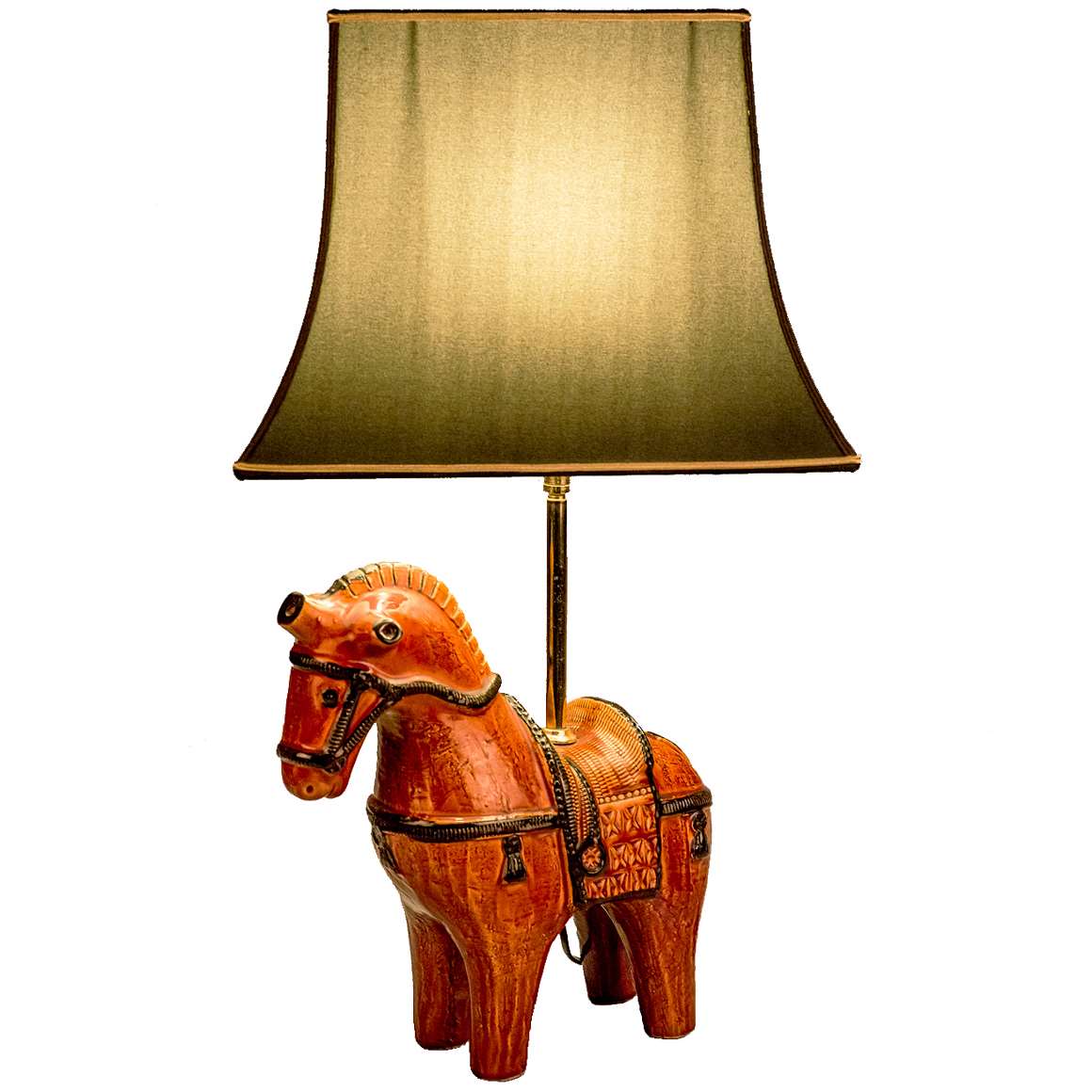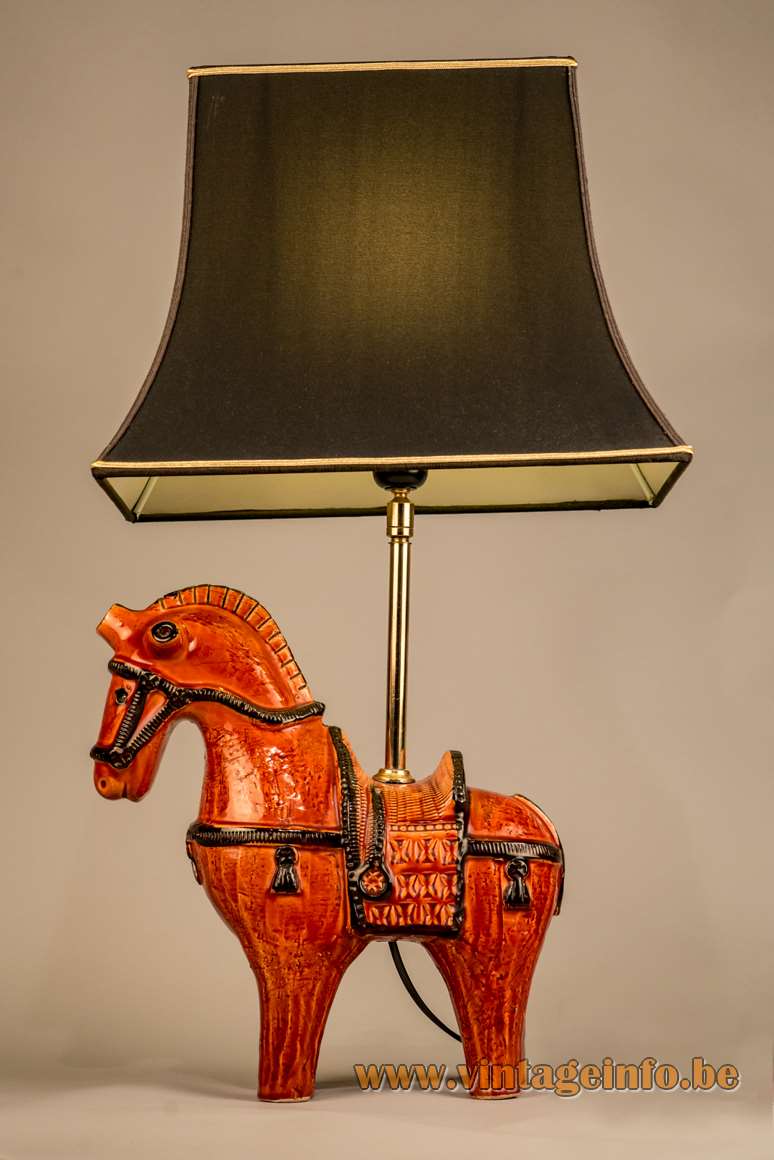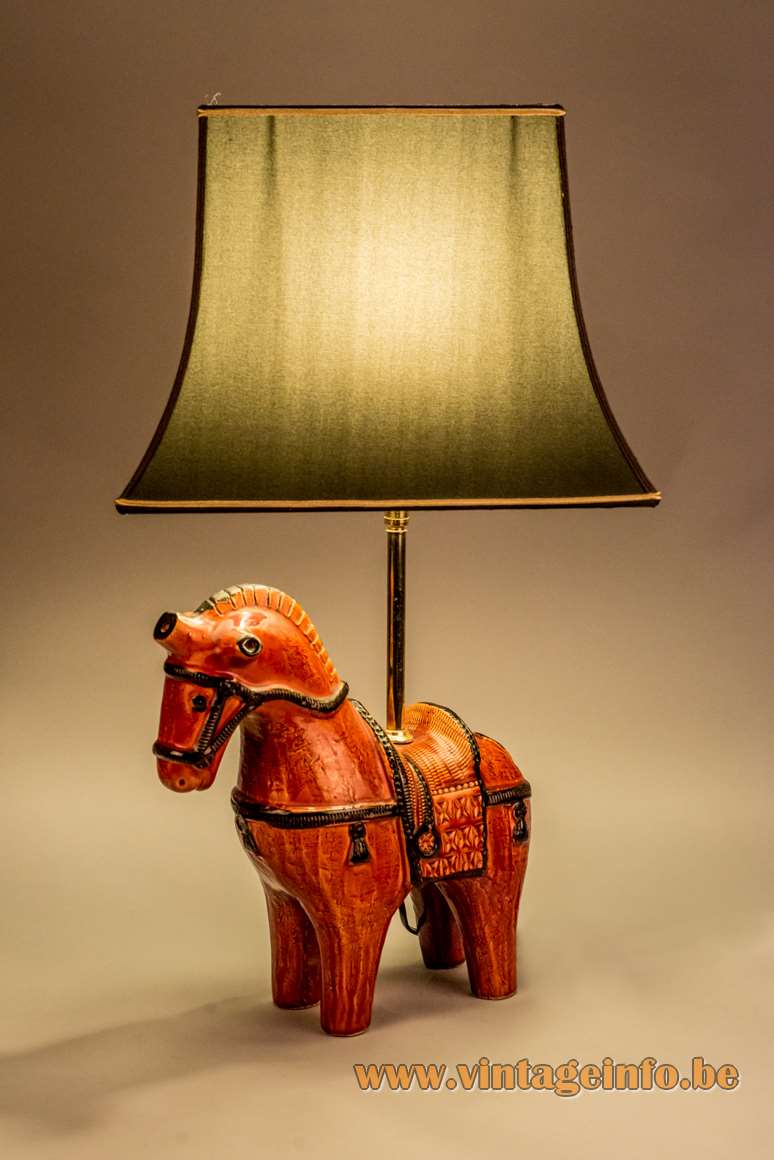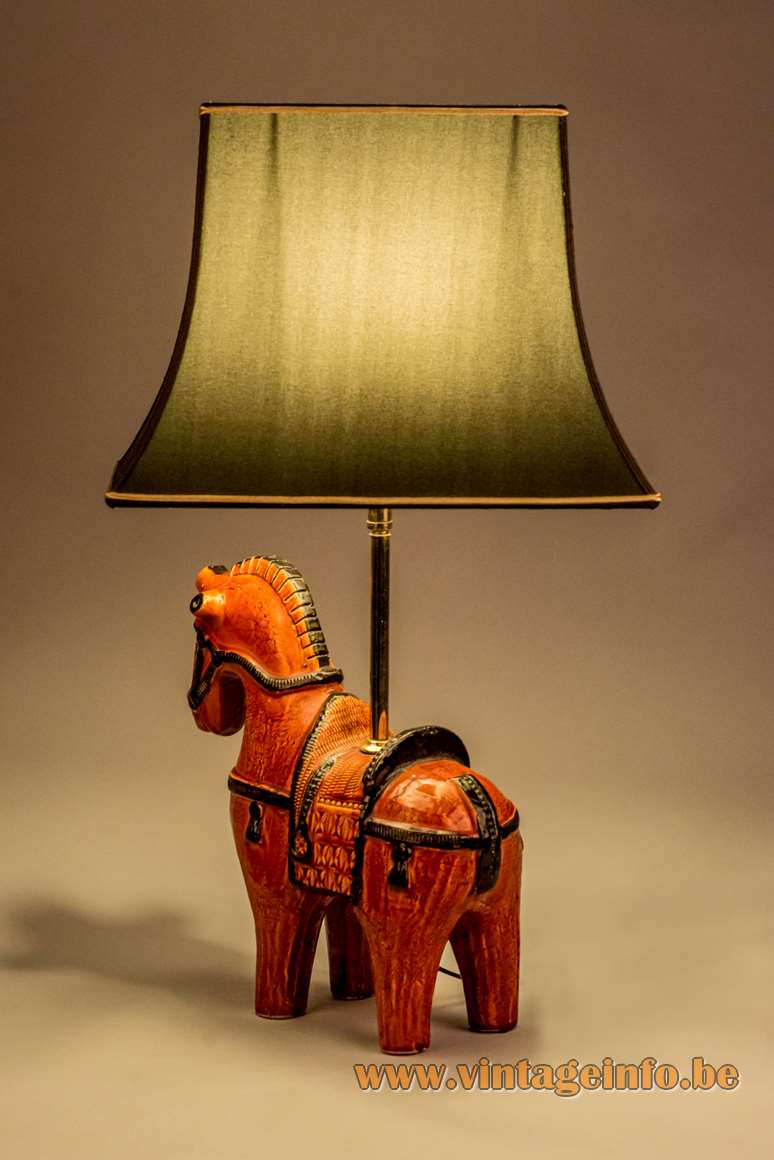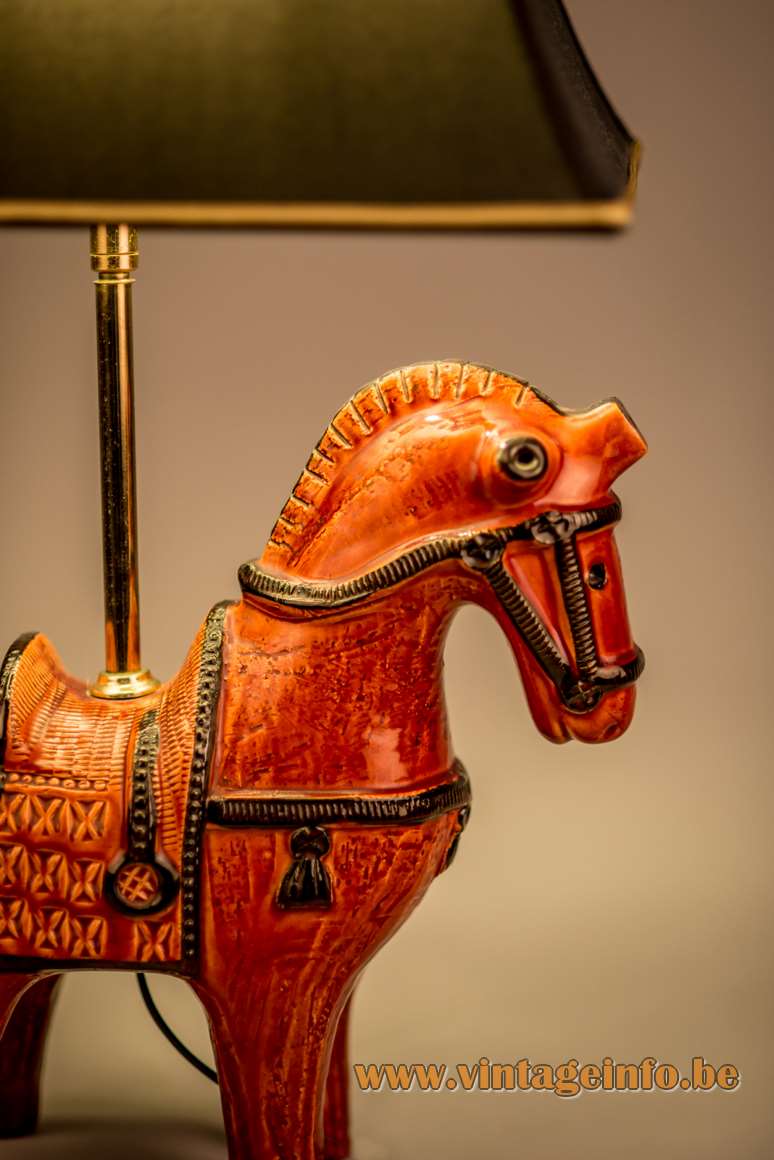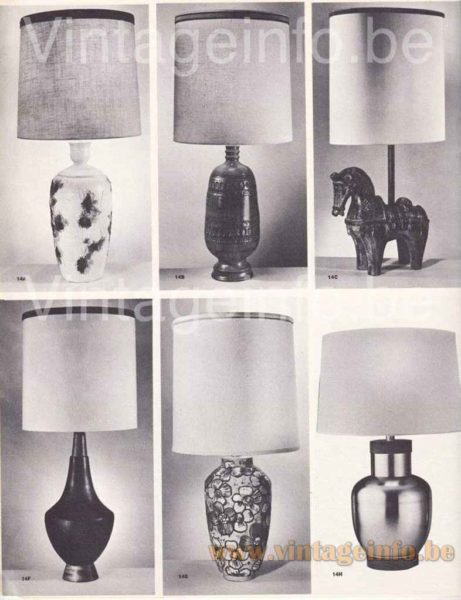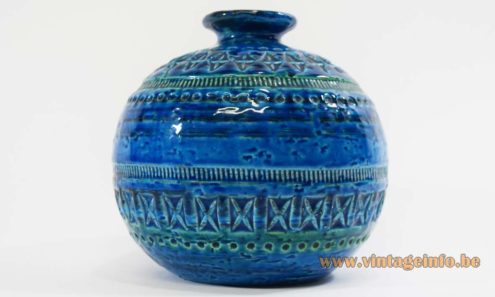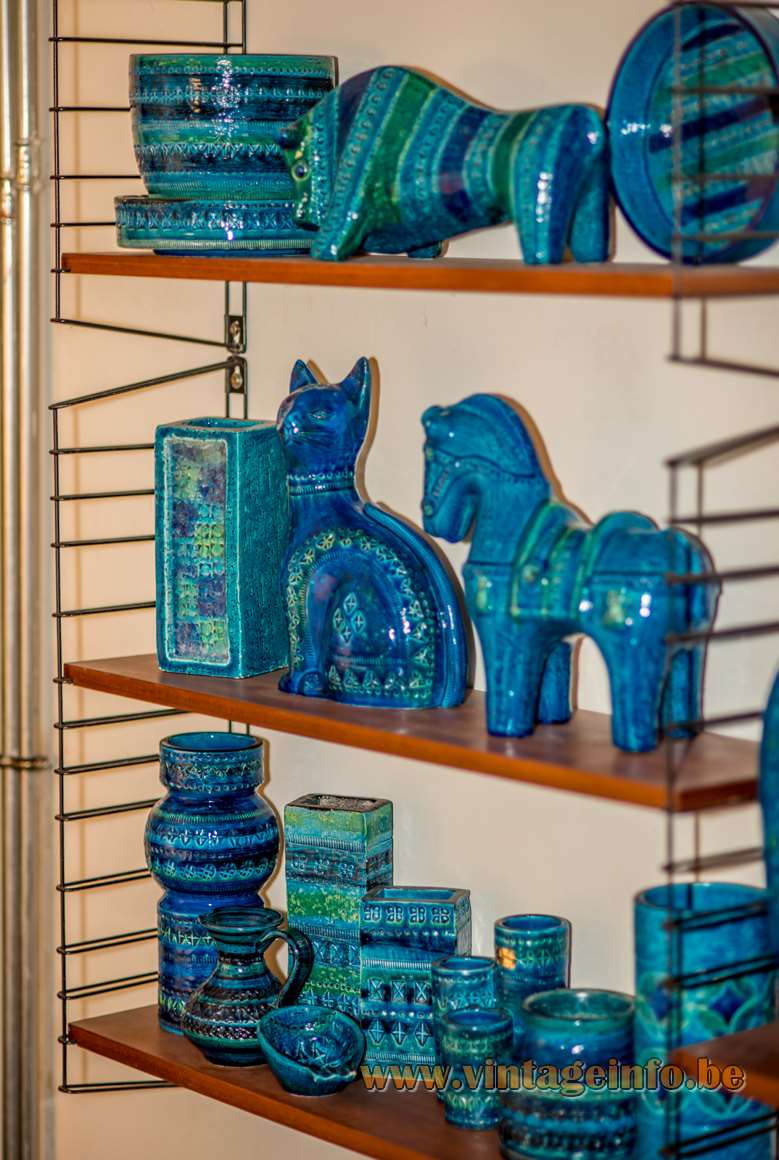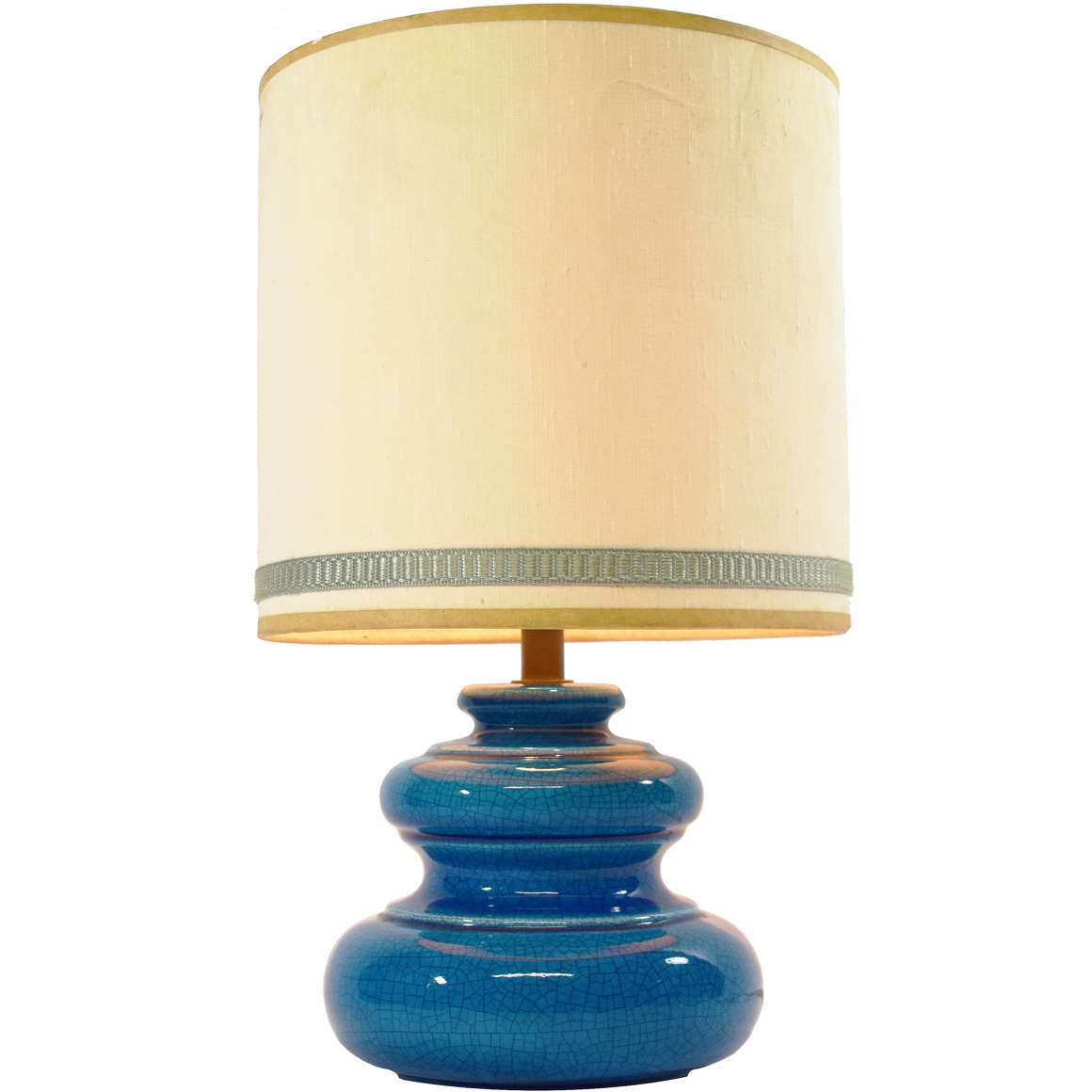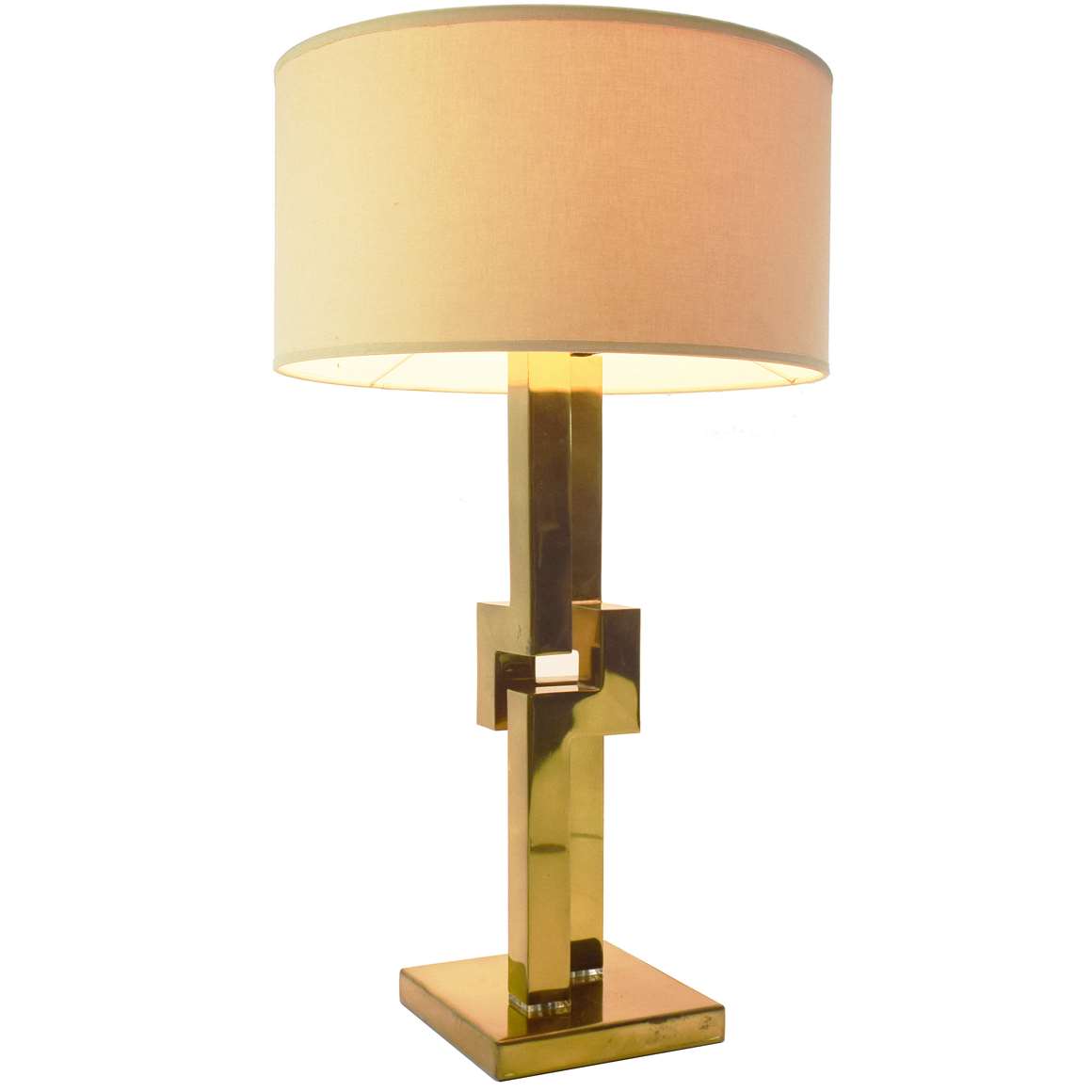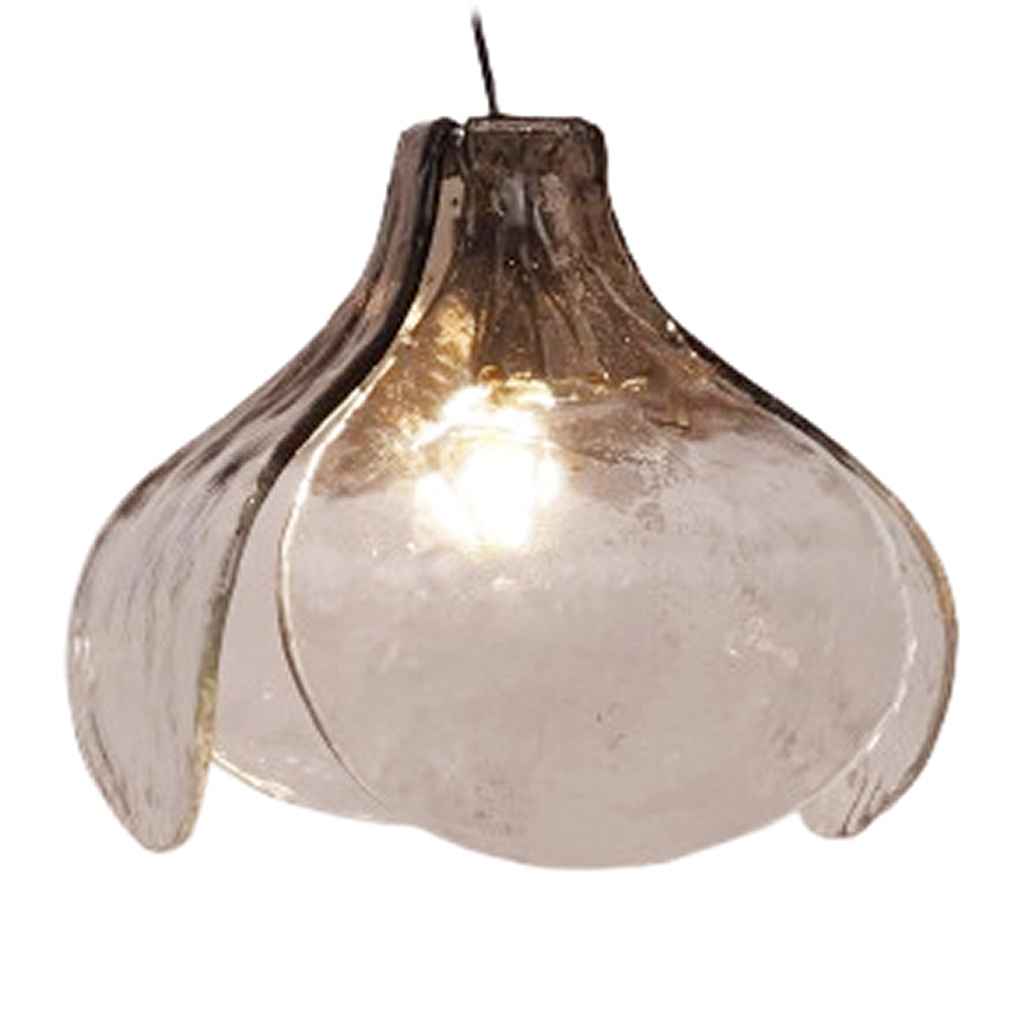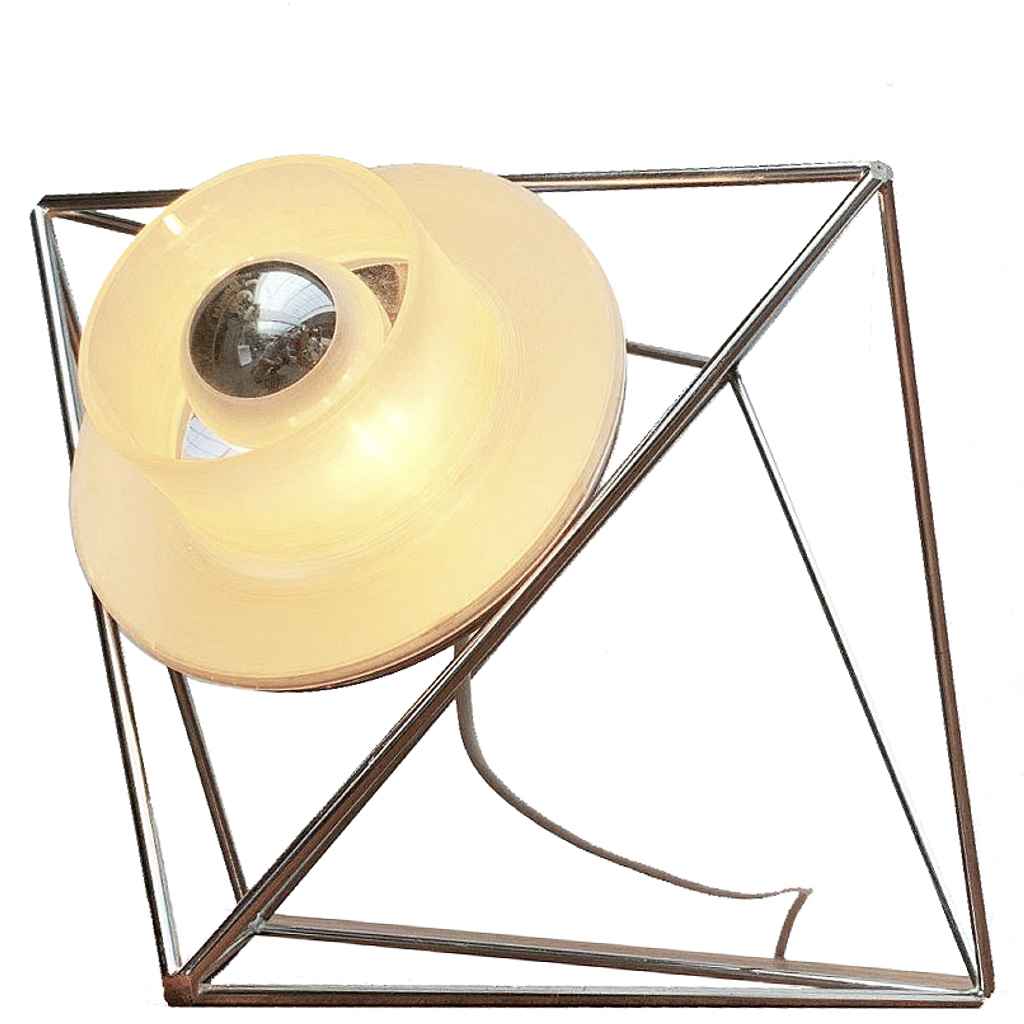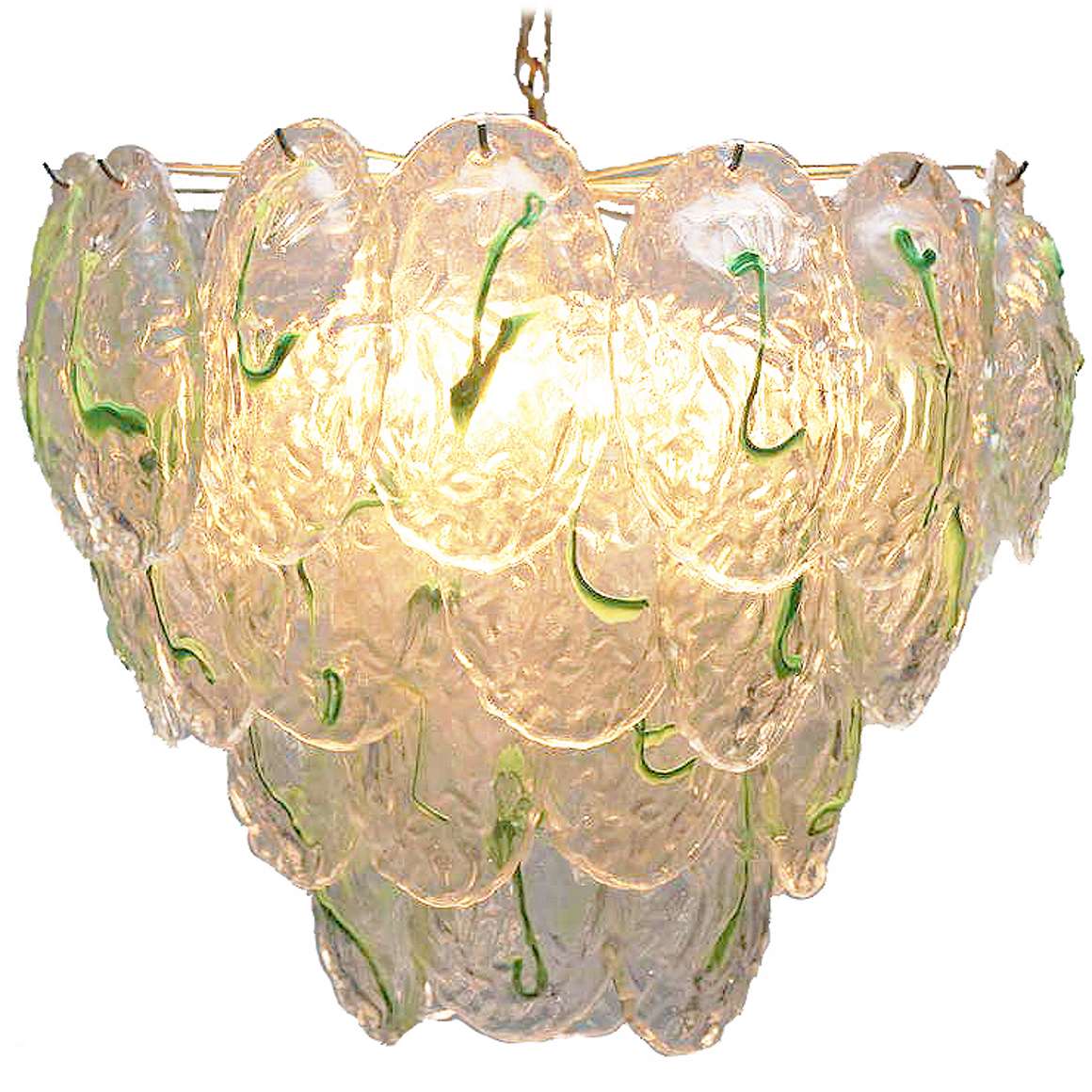Bitossi Horse Table Lamp – 1964 Raymor USA Catalogue Picture
Aldo Londi Vase
Many thanks to Tinneke for the beautiful pictures.
Bitossi Horse Table Lamp
Materials: Orange and black enamelled ceramics hors base. Brass rod. Fabric pagoda lampshade. Bakelite E27 socket.
Total height: 70 cm / 27.55”
Height: 40 cm / 15.74”
Width: 20 cm / 7.87”
Length: 43 cm / 16.92”
Electricity: 1bulb E27, 1 x 60 watt maximum, 110/220 volt.
Anytypeof light bulb canbeused. Not a specific one preferred.
Period: 1960s, 1970s.
Designer: Aldo Londi (1911-2003).
Manufacturer: Bitossi Ceramiche Srl, Via A. Gramsci 16, 50056 Montelupo Fiorentino, Firenze, Italy.
Other versions: This Bitossi horse table lamp exists in several colours. These lamps were made from the sixties until the seventies.
Maioliche Artistiche Guido Bitossi – Iconic Italian Ceramics Since 1921
Founded in 1921 by Guido Bitossi in Montelupo Fiorentino, just outside Florence, Maioliche Artistiche Guido Bitossi has become a symbol of excellence in Italian ceramic art. The company quickly gained recognition for its unique blend of tradition and modern design in majolica pottery.
In 1946, after the end of World War II, Aldo Londi joined the company. With a remarkable artistic vision and a deep understanding of evolving aesthetic trends, Londi became a key figure in shaping the brand. Over his 50-year tenure, he served as painter, artistic director, and passionate researcher of ceramic styles, continuously pushing creative boundaries.
One of the most celebrated collaborations came in 1955 when Ettore Sottsass Jr. (1917–2007), a pioneer of modern Italian design, began working with Bitossi. His innovative ceramic creations reflected a playful, architectural approach, influencing generations of designers and collectors alike.
Over the decades, many renowned designers contributed to Bitossi’s rich legacy, including: Antonella Cimatti, Arik Levy, Benjamin Hubert, Cedric Ragot, Dimorestudio, Elma Lisowski-Choung, Fabio Novembre, George Sowden, Gerard Taylor, Karim Rashid, Laura Bethan Wood,
Luisa Bocchietto, Mario Ferrarini, Marco Zanini, Martine Bedine, Massimo Giacon, Matteo Thun, Max Lamb, Michele De Lucchi, Monica Förster, Nathalie Du Pasquier, P. Palma & C. Vannicola,
Piero Fornasetti, Remo Buti, and Ronan & Erwan Bouroullec.
In the United States, Bitossi ceramics – particularly its iconic mid-century modern lamps and vases – were distributed by Raymor, a well-known importer of European design. As evidenced in the 1964 Raymor catalogue, many Bitossi pieces gained international recognition during this period.
Raymor ceased operations in 1980, but its influence remains visible among collectors and vintage lighting enthusiasts.
Raymor: The American Gateway to Mid-Century European Design
Raymor was a pioneering American importer and distributor of modern design, founded in the early 1940s by Irving Richards. With a background at Lightolier, Richards had strong ties to European manufacturers, particularly in Italy and Scandinavia.
His goal was to bring the best of European modernist design to the U.S. market – focusing on ceramics, glass, furniture, and lighting.
One of Raymor’s most iconic partnerships was with Bitossi Ceramiche of Florence. In the 1950s and 60s, Raymor imported works by Aldo Londi, including the now-famous Rimini Blu series. In fact, it was through Raymor that Ettore Sottsass Jr. was introduced to ceramic design in 1956, working under Londi at Bitossi.
Raymor’s catalogues also featured ceramics by Alvino Bagni, Mancioli, and Pozzi, alongside elegant Scandinavian glass and wood designs by Tapio Wirkkala and Arne Jacobsen.
The company also collaborated with American designers, producing the iconic “Tiki” furniture line by Arthur Umanoff and ceramic components for
Howard Miller’s Meridian division, including clock designs by George Nelson.
Raymor wasn’t just an importer – it became a trendsetter. Its clean, modern aesthetic helped shape the mid-century modern style in postwar America.
The brand’s in-house collections, such as the Omnibus wall units, and cross-continental collaborations positioned Raymor as a design authority in the
1950s – 70s interior market.
In 1963, Raymor was acquired by the Simmons furniture group, and rebranded in 1969 as Raymor Richards Morgenthau Inc.. Later merged with California-based importer Moreddi in 1978, the company eventually ceased operations due to rising import costs and shifting design tastes by the end of the decade. Although Raymor no longer exists, its influence on the American modern design landscape is enduring.
All the electric parts of this table lamp were made by VLM Components.
VLM Components
VLM Components is a renowned Italian manufacturer of electrical parts for lighting fixtures. The company was founded in 1945 in Buccinasco, a small village located near Milan, Italy. Over the decades, VLM became a respected name in the lighting industry, known for precision engineering and durable components.
In 1968, VLM gained international attention for its line of modernist light switches designed by the legendary Italian designer Achille Castiglioni. These switches are now considered icons of mid-century Italian industrial design and are still sought after by collectors, designers, and vintage lighting enthusiasts. You can explore examples of these designs here.
Today, VLM Components operates under the umbrella of the Relco Group,
a lighting technology company founded in 1967. The group owns several respected brands in the lighting and electrical sector, including Relco, Leuci, Relco Lighting, VLM, and Segno.
